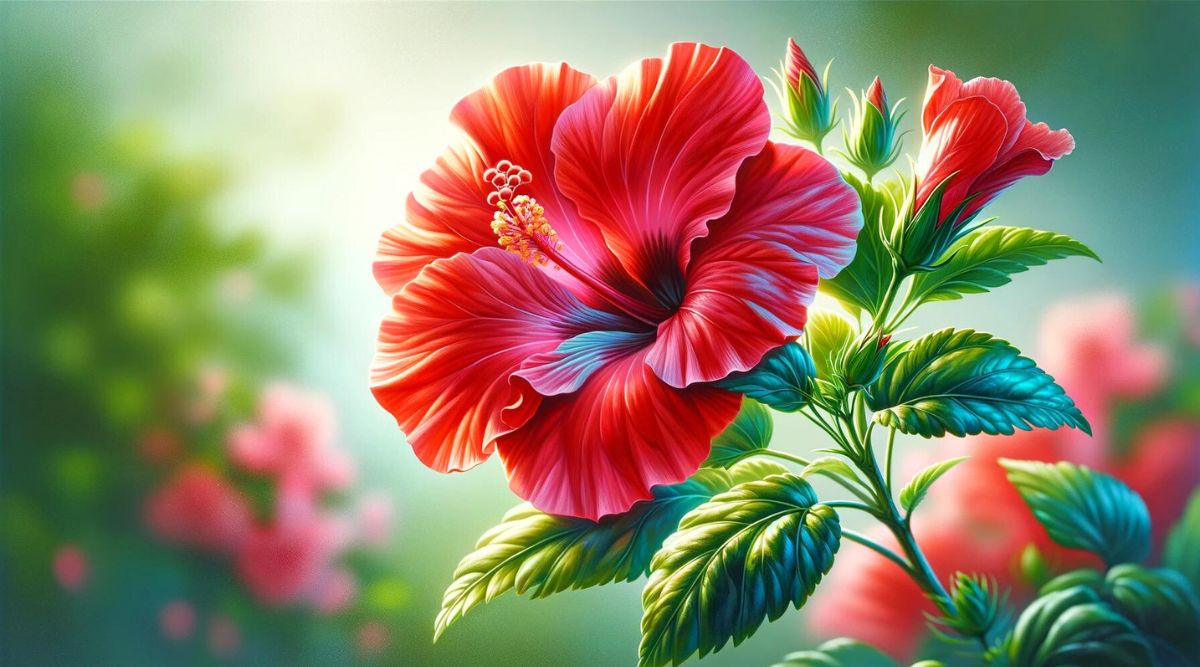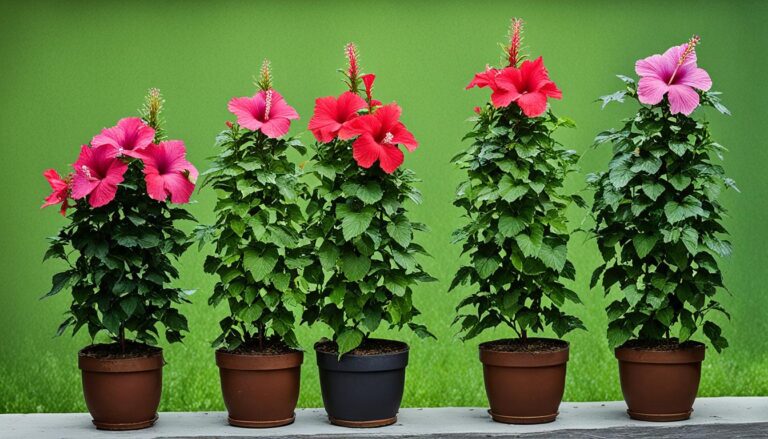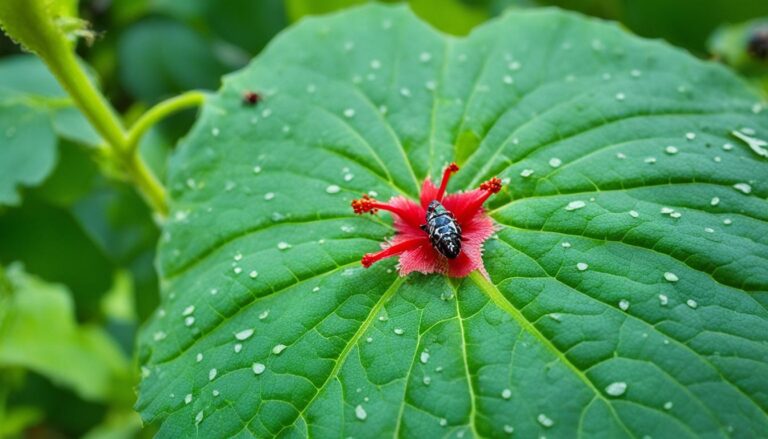Hibiscus Plant Care – Secrets to Vibrant Blooms All Season Long
As a passionate gardener for over 7 years, I’ve found that hibiscus plants are one of the most rewarding flowers to grow.
With their breathtaking blooms in a kaleidoscope of colors, it’s no surprise that hibiscus is a favorite among plant enthusiasts.
In this guide, I’ll share my experience and knowledge to help you successfully grow and care for these tropical beauties.
Planting Hibiscus
When planting hibiscus, consider the following:

- Location: Choose a spot with at least 6 hours of direct sunlight per day. In hot climates, provide some light afternoon shade.
- Soil: Hibiscus thrives in well-draining soil. Amend heavy clay soil with compost or peat moss.
- Spacing: Plant hibiscus 3-5 feet apart to allow room for growth.
- Timing: Plant in spring after the threat of frost has passed.
I remember when I first planted my Fiesta hibiscus – I was amazed at how quickly it grew and bloomed when given the right conditions!
Watering
Consistent moisture is crucial for healthy hibiscus plants. Here are some watering tips:
- Check soil moisture by sticking your finger in the soil. If the top inch feels dry, it’s time to water.
- Water deeply until water runs out of the drainage holes or the soil is wet 6 inches down.
- Watch for signs of overwatering (yellow leaves, consistently soggy soil) or underwatering (wilting, dropping buds and leaves).
In my experience, using a moisture meter has been a game-changer in ensuring my hibiscus plants receive the perfect amount of water.
Sunlight Requirements
Hibiscus plants require:
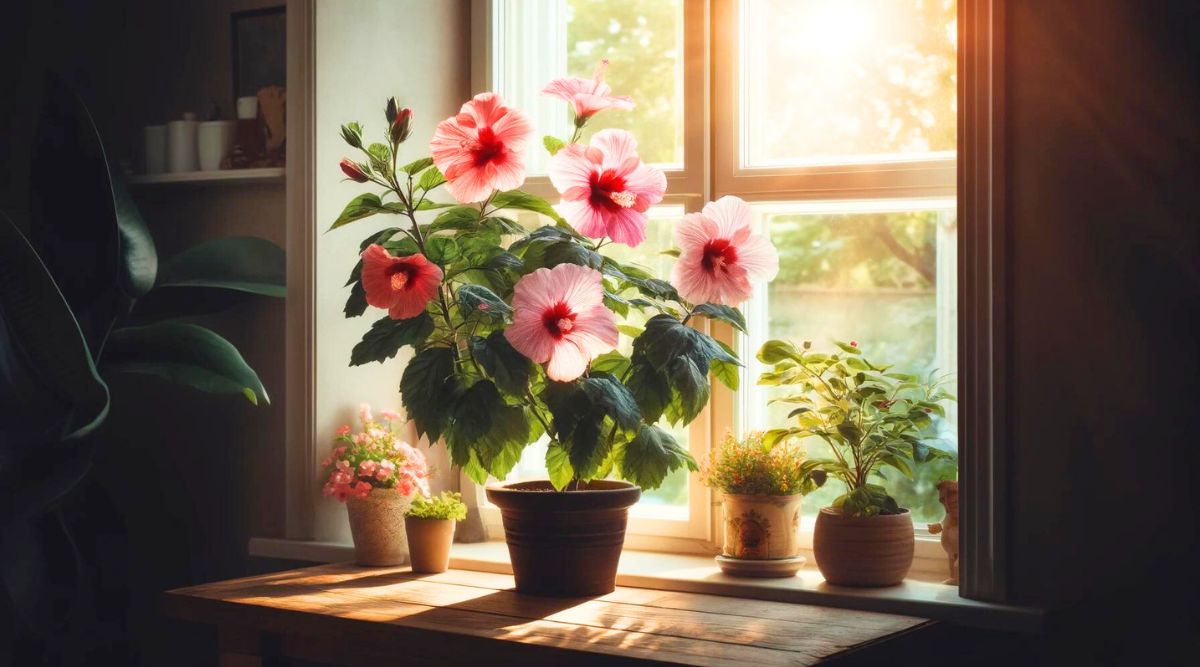
- Full sun: At least 6 hours of direct sunlight per day.
- Light shade: Some afternoon shade is beneficial in very hot climates.
- Indoor growing: Place hibiscus in your sunniest window and supplement with grow lights if needed.
Fun fact: Did you know that the yellow hibiscus is the state flower of Hawaii? It’s no wonder these sun-loving plants are so popular in tropical settings!
Fertilizing
Regular fertilizing promotes healthy growth and abundant blooms. Follow these guidelines:
- Use a balanced, slow-release fertilizer labeled for use on flowers or tropical plants.
- Fertilize once in early spring, again after the first flush of blooms, and a final time in mid-summer.
- Avoid fertilizing in late fall or winter when the plant should be dormant.
I’ve found that using a combination of slow-release granular fertilizer and liquid fertilizer every few weeks keeps my hibiscus plants vibrant and blooming consistently.
Pruning
Pruning is essential for maintaining the shape and health of your hibiscus. Keep these tips in mind:
- Prune in late winter or early spring before new growth begins.
- Remove dead, damaged, or diseased branches.
- Cut back the previous year’s growth by about one-third.
- Prune lightly throughout the growing season to shape the plant and remove spent blooms.
I love how pruning my hibiscus encourages fresh growth and a more compact, bushier shape. It’s like giving them a fresh start each spring!
Common Problems
While hibiscus are generally low-maintenance, they can encounter a few issues:
| Problem | Symptoms | Solution |
|---|---|---|
| Pests (aphids, whiteflies, spider mites) | Visible insects, distorted leaves | Spray with water, use insecticidal soap or neem oil |
| Diseases (leaf spot, blight, canker) | Discolored or spotted leaves | Provide good air circulation, and water at the base, and remove affected leaves |
| Yellow leaves | Yellowing foliage | Check soil moisture, adjust watering, consider nutrient deficiencies |
| Pale new growth | Light-colored new leaves | Fertilize with a balanced fertilizer |
Regularly inspecting your hibiscus plants allows you to catch and address any issues early, promoting the overall health of your plants.
Overwintering
Protecting your hibiscus during winter depends on your climate:
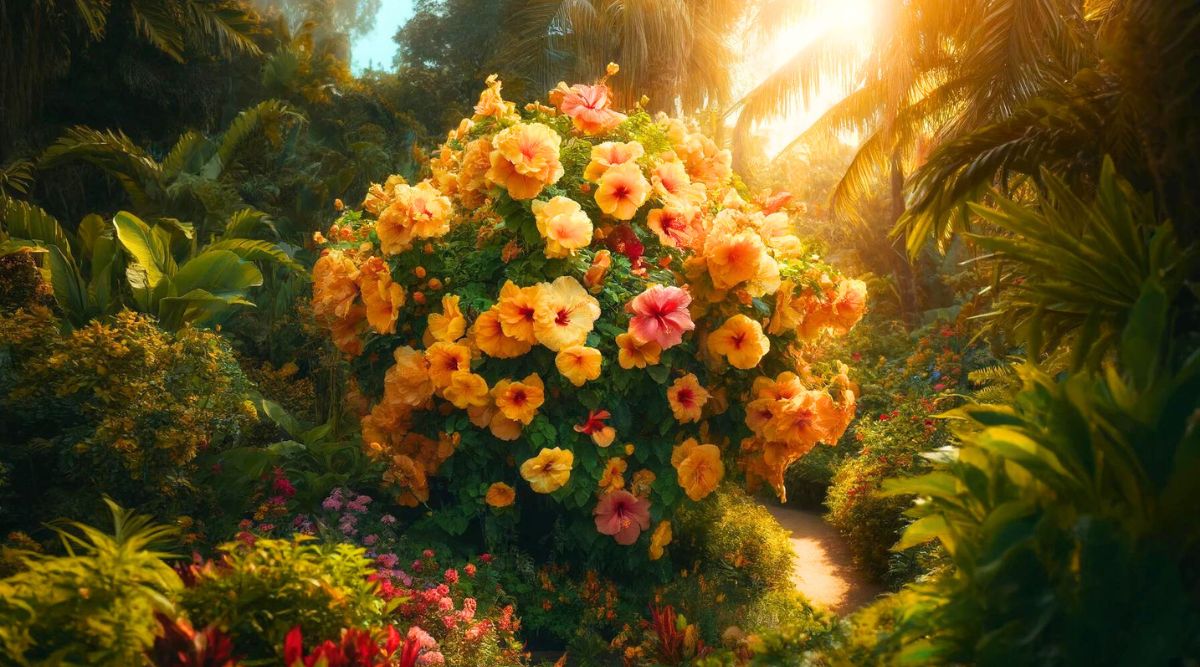
- Cold climates: Bring plants indoors before the first frost, place them in a sunny window, and reduce watering and fertilizing.
- Mild climates: Overwinter outdoors by protecting with a thick layer of mulch, pulling it away from the base in spring.
I’ll never forget the first winter I successfully overwintered my hibiscus indoors – the joy of seeing those first new leaves in spring was incredible!
Conclusion

Growing hibiscus is a truly rewarding experience, and with the right care, you can enjoy its stunning blooms all season long. By providing the proper sunlight, water, fertilizer, and a little TLC, you’ll be amazed at how these tropical beauties thrive, even if you’re a beginner gardener.
I encourage you to dive into the world of hibiscus and discover the joy of nurturing these incredible plants. Trust me, when those spectacular flowers unfurl, you’ll be hooked! Happy gardening!

